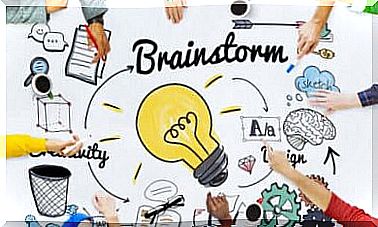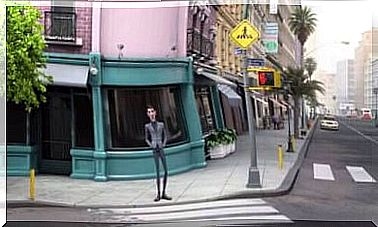Design Thinking In School

Design thinking, or Design Thinking, comes from the business world and is in particular a method that is widely used in marketing. The term refers to a method for problem solving and innovation in connection with products and services that meet customers’ needs.
But the method has specific properties that teachers can apply in the classroom as a way to create solutions to education-related problems and needs.
What is design thinking?
Design thinking is a way of collaborating in a group to solve problems and come up with innovative solutions. According to one of its creators, Tim Brown, it is a method that focuses on individuals and concentrates more on the design process than on the end product.
The method consists of five phases:
- Empathy: This refers to putting yourself in your users’ shoes to discover their needs.
- Define: This step involves defining users’ needs and perceptions to create a starting point.

- Idea: Here the group participants present a variety of creative solutions.
- Prototype: This step involves creating solutions, developing and implementing the best ideas from the previous phase.
- Test: This is an evaluation that indicates which phases in the process one must go back to to improve or change certain aspects. The test is always based on feedback from users and makes it possible to know if the design of each phase and the application of the solutions really meet their needs.
How does design thinking work in connection with education?
When looking at the method from a pedagogical perspective, design thinking is a very useful and innovative tool with many advantages. It serves to improve educational institutions and the relationships and processes used in them. The method offers simple solutions to problems through collaboration, observation, experimentation and continuous evaluation.
Teachers can use this method to solve problems that have to do with the psychological environments in the school and relationships with and between students. This includes how to organize training spaces, such as the library or computer room.
The method is also useful for providing solutions for specific learning needs of a group or a specific student. In addition, it helps teachers to design the best way to teach different subjects.
Design thinking gives all parties the opportunity to participate and offer solutions based on everyday educational needs. The collaboration between teachers, students and parents is an essential part of improving the school’s work and environment.
Application of design thinking in school
As I said, the method helps teachers find creative and innovative answers to educational problems. Follow these steps to apply design thinking in school:
Empathize with the parties involved
The first thing you need to do is feel empathy with the users, just as described in the first phase of the method. This applies not only to students but also to other teachers and parents.
You need to be aware of their needs, problems and desires. This means that you familiarize yourself with their situation in order to understand them and analyze their circumstances. In this phase, it is important to listen, observe and note data and information.
Design a road
The second step is to create a path based on the information from the previous phase. The idea is to define and design a focus on action where you organize the information you have received to discover the most relevant and urgent aspects, needs and problems.
Then you ask yourself what can cause the problems and what options you have that can offer solutions and improvements.

Come up with ideas
In the third phase, it’s time to start coming up with ideas. This is a creative phase in which all parties in the educational context should participate. To make this happen in a purely practical way, there are methods – such as brainstorming – that help to produce and organize all the ideas that come up.
It is important that this step is relaxed and fun to attract innovative ideas from all participants.
Materialize the ideas
In the fourth step, it is time to transform the ideas from the previous step into something tangible. It means taking the most coherent and acceptable ideas and giving them form.
In other words, it is about deciding how to implement them. Here, participants must think about aspects such as time, space, human resources, finances and materials needed to implement the ideas.
Validate and evaluate
Finally, in the fifth and final step, you must validate the path you have chosen in each of the previous steps. In other words, you explain and communicate the decisions you have made. And based on user feedback, you fine-tune the actions to be taken.
In addition, this phase also means that you evaluate the entire implementation process. This means that you can test together with the users themselves that you have succeeded in finding effective and innovative solutions to their needs, wishes and problems.









